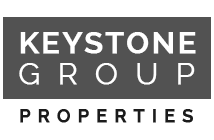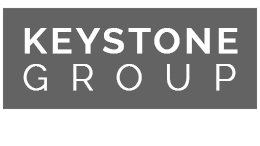Lenders Granting More Second Mortgages as Home Values Rise

Keystone Group Properties serves discriminating buyers and sellers ofexclusive SO CAL real estate in Newport Beach, —along with exclusive Los Angeles County real estate. For information about distinguished Southern California homes for sale, call Bob Cumming of Keystone Group Properties at 310-496-8122.
Lenders Granting More Second Mortgages as Home Values Rise
An increase in second mortgages reflects major lenders’ growing confidence that the real estate market has finally made the turn to recovery.
By Kenneth R. Harney
WASHINGTON — If you have a pressing need to raise some cash, here’s some good news: Rising home values are encouraging lenders to revive a product that imploded during the housing bust years — second mortgages.
Researchers at Equifax, one of the three national credit bureaus, say total outstanding balances of second home mortgages at banks rose in the latest month for the first time in nearly five years. Though the blip was relatively small — about three-tenths of a percent — analysts say any increase in the amount of second mortgages is a bellwether event, indicating that major lenders are showing growing confidence that the real estate market has finally made the turn to recovery. The Federal Reserve recently reported that American homeowners’ equity stakes rose $406 billion in the second quarter, a 5.9% increase over the previous quarter and the highest it has been since 2008.
Second loans, which include fixed-payment mortgages as well as floating-rate home equity lines of credit, put the bank in second position in the event of a foreclosure. Say you have a house worth $250,000 with a $200,000 first mortgage and a $20,000 second mortgage. The proceeds of any foreclosure would initially be used to pay off the lender in the first position. Any remainder would pay off the holder of the second lien. Because lenders assume a “junior” position when they make a second loan, these mortgages are generally considered to be higher risk and carry higher interest rates and fees than a first.
Second loans can be used for a variety of purposes — paying for kids’ college tuition, injecting capital into a small business, financing a home improvement and paying off credit card debts are among the most popular.
Equifax, which receives information from virtually every major bank and mortgage lender, compiles data on a variety of loan products. In its latest National Consumer Credit Trends study, it found that home equity lending appears to be rebounding fastest in New Mexico and California, where outstanding balances jumped 2.3%, along with Nevada (2.1%), Colorado (2%) and Florida (1.6%).
Increases in equity lending, said Amy Crews Cutts, Equifax’s chief economist, “are really a healthy sign” for the economy overall because in the years after the housing bust, many banks had little confidence that home prices were stable enough to lend against in second position.
Now when Cutts speaks with bankers, she finds them “pretty willing to do [second] loans when their customers need them — they’re much more open” than they’ve been in years. Though underwriting standards are tougher than they once were, banks are lending again, and they are experiencing smaller losses. In the most recent study, Cutts said, second mortgage write-off rates fell to just 2.7%, the lowest they’ve been since February 2008.
Second loans are “an important element” in Bank of America’s “customer relationship strategy,” said Matt Potere, home equity executive for BofA. “We expect growth to occur as market conditions continue to improve.”
James Chessen, chief economist for the American Bankers Assn., agrees. “It’s good news that finally there’s some upward movement” in home equity lending, he said.
But Chessen isn’t yet convinced that this is a long-term trend, in large part because of slow job growth and uncertainty about the economy. Also, notwithstanding Equifax’s finding that bank equity loan write-offs are down, Chessen’s own surveys indicate that delinquencies on home equity loans rose from 4% to 4.09% in the latest quarter.
Rate quotes and terms on home equity loans appear to reflect some of that uncertainty. A look at quotes on Oct. 5 at Bankrate.com showed that depending on how banks perceive local markets, rates can vary significantly.
For example, in suburban Maryland just outside Washington, D.C., Bank of America offers a $75,000 second mortgage at 6.34%, assuming that the borrowers have FICO credit scores in the 700 to 850 range — good to excellent — and a total loan-to-value ratio no higher than 80%. In Hawthorne, by contrast, the same loan size and criteria come with a 7.24% rate.
So be aware that while lenders are more willing to extend home equity credit, rates can vary depending on the location of the house, the loan size and your credit score.


